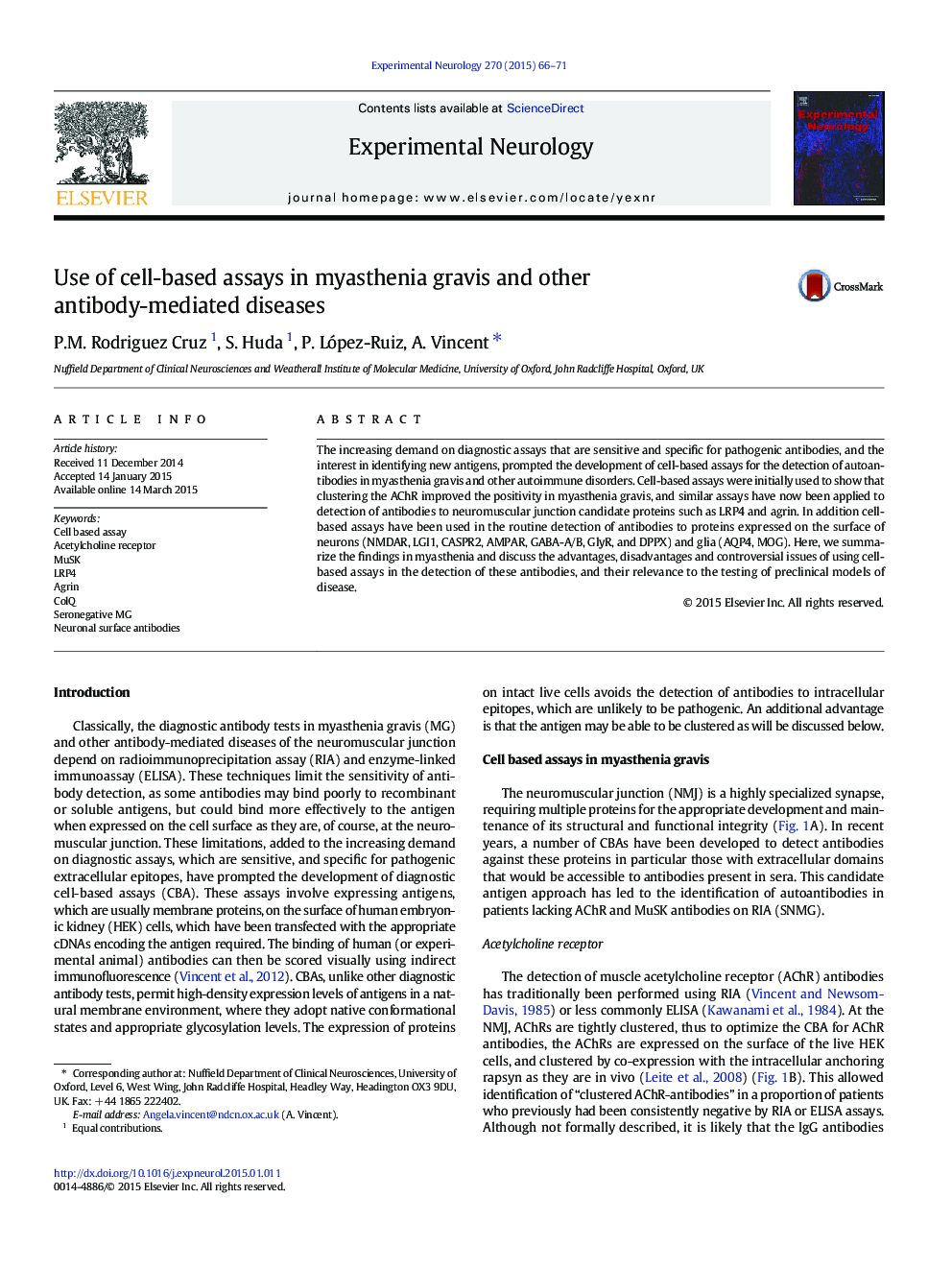| Article ID | Journal | Published Year | Pages | File Type |
|---|---|---|---|---|
| 6017414 | Experimental Neurology | 2015 | 6 Pages |
The increasing demand on diagnostic assays that are sensitive and specific for pathogenic antibodies, and the interest in identifying new antigens, prompted the development of cell-based assays for the detection of autoantibodies in myasthenia gravis and other autoimmune disorders. Cell-based assays were initially used to show that clustering the AChR improved the positivity in myasthenia gravis, and similar assays have now been applied to detection of antibodies to neuromuscular junction candidate proteins such as LRP4 and agrin. In addition cell-based assays have been used in the routine detection of antibodies to proteins expressed on the surface of neurons (NMDAR, LGI1, CASPR2, AMPAR, GABA-A/B, GlyR, and DPPX) and glia (AQP4, MOG). Here, we summarize the findings in myasthenia and discuss the advantages, disadvantages and controversial issues of using cell-based assays in the detection of these antibodies, and their relevance to the testing of preclinical models of disease.
